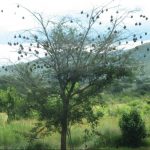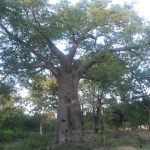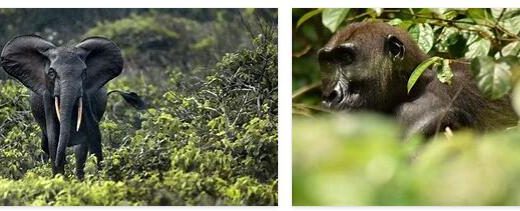Zimbabwe Ecological Problems
Deforestation is a serious ecological problem, a large part of the wood is used for tobacco drying. Reforestation is a problem. However, this would be necessary to reduce CO2 emissions and respond to the consequences of climate change. According to media reports, the natural forest cover fell from 53% to 45% of the country’s area between 2014 and May 2019, citing the national forest commission. This makes innovative energy-saving and energy-efficient drying techniques all the more important. Tobacco is an important source of foreign currency and some farmers benefit as well. Despite intensification of cultivation – partly with child labor -the tobacco quality and quantity varies over time. In addition, increased tobacco production has negative effects on food cultivation. Besides the USA and Europe, China is the main buyer of dried tobacco leaves.
The reason for the increased deforestation in recent years was also the increasing poverty as a result of the economic crisis since 2000. Cuts in the power supply led to the increased use of wood for cooking, heating and lighting. The national forest commission estimates the annual forest losses now on 330,000 hectares. Rural areas are inadequately electrified, and over 50% of the energy required is obtained from wood. The consequences include the degradation of cultivated areas and soil erosion. The charcoal trade is flourishing in the urban centers, with the production of charcoal in the suburbs serving as a means of livelihood for impoverished and unemployed people. They face fines for illegal logging or trading. Laws to protect forests should have a regulatory effect.
In order to improve the social and ecological standards in the timber industry, the Zimbabwean government introduced a certification system in May 2012 that corresponds to international standards. Since then, it’s all about implementation. 200 official licenses are awarded annually.
According to aristmarketing, the power supply of the country is on the state level by the Zimbabwe Electricity Regulatory Authority regulated and by imports from South Africa, Zambia, Mozambique and the Democratic Republic of Congo met. Repeated Zimbabwe has incurred costs not paid. Power fluctuations and hours of power outages affect craft and industrial businesses; Power supply problems are of a structural nature.
Renewable energies are only partially used in spite of their energy policy consideration and their potential, for example solar systems on private houses of wealthy owners, on schools or health centers. The solar radiation would allow a much higher usage.
In December 2013, a program managed by a number of donors (ZIM Fund) managed by the African Development Bank made available 17 million US dollars to expand the electricity supply. In February 2017, 18 million US dollars were approved for the expansion of the electricity supply in the intensively used agricultural area around Karoi. Beginning April 2019 and again beginning in October 2019 were drastic electricity price increase in the media known. In May and June 2019, daily power outages lasting several hours worsened, mainly due to payment arrears with South African and Mozambican electricity suppliers and due to a lack of water in hydroelectric power plants, for example at the Kariba dam. In July 2019 and the following months, the power outages lasted up to 18 hours a day – a problem that continues. At the end of April 2020, it became known that coal-fired power plants were to be expanded with Chinese funding; specifically, a new coal-fired power plant using water from Lake Kariba in the north of the country is planned. The electricity prices and power cuts were controversial in the November 2020 issues in the media.
The ecological problems are exacerbated by illegal gold mining in the river valleys. Although it is a pre-colonial technique of resource use, many people are forced to panning for gold in the dry season in view of crop failures, impoverishment and lack of alternative income. Existence leaves many with no choice but to look for gold in the rainy season, for example in abandoned shafts that have not been secured by the companies. At least 24 people died in a serious accident in February 2019. Numerous deep holes in river beds and at river banks lead to erosion damage and silting. There are comparable ecological problems with illegal diamond mining, which is also operated to secure livelihoods. These problems have a negative impact on the water balance of rivers. In addition, higher evaporation rates from the waters lead to higher temperatures, which in turn has a negative impact on agriculture. At the same time, agriculture and mines cause water pollution, such as heavy metals in the water.
According to the African Development Bank, the national authorities must increasingly grapple with the decline in surface and groundwater. The World Bank is also calling for more transparent administrative processes and better coordination between regional, national and local bodies. Only then could environmental and water laws and integrated water resource management be implemented. The cholera epidemics of 2008/09 and 2013-2014 as well as in September 2018 showed how necessary improvements are. While the expansion of the water supply and sanitary infrastructure was exemplary until the end of the 1990’s, today only 67% of rural residents and 54-78% of urban residents have access to clean drinking water.
Structural problems such as mismanagement and corruption, such as the use of a $ 144 million loan from China’s Exim Bank to buy luxury cars, even though they were intended to clean up the water supply, continued in September 2019 and in the subsequent months to a drinking water crisis populated with relevant health problems in tight and infrastructure disadvantaged areas of Harare and also of Bulawayo. These problems with access to uncontaminated drinking water last in 2020. Due to the gender-specific division of labor, women and girls in particular are entrusted with the time-consuming water supply. Private individuals who can afford it have deep wells and their own water reservoirs built.
In April 2014, international experts feared that the Kariba dam in the north of the country could burst due to large amounts of water as a result of heavy rain. Around 3.5 million people on the lower Zambezi River in Zimbabwe and Mozambique would have been affected by floods. In 2015, early 2016 and early 2019, the opposite was the case: drought and rapid water loss in the Kariba reservoir, whose hydroenergy production was greatly reduced. The fishing and basic food supplies associated were affected. The water level rose again in mid-2020, which was beneficial for the generation of hydro energy. For years the dam must be repaired with financial support from international donors.













